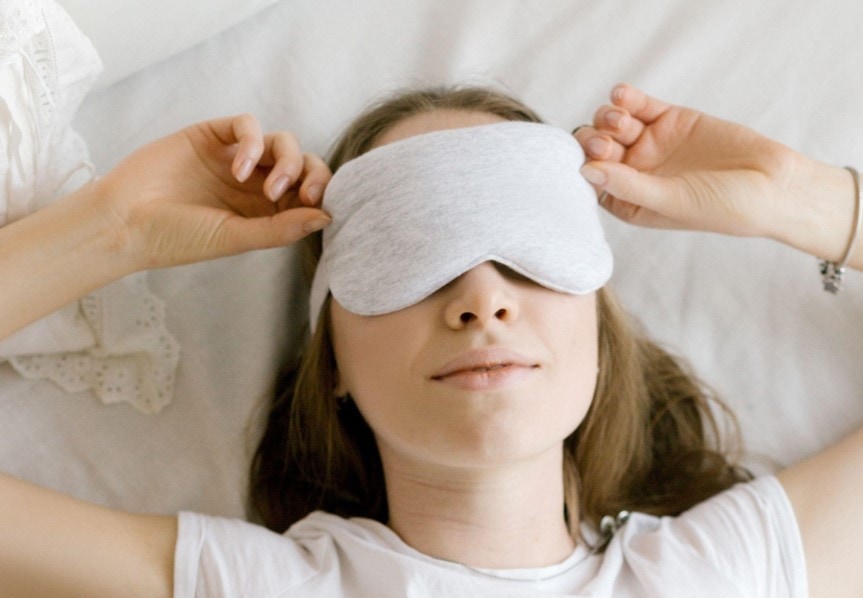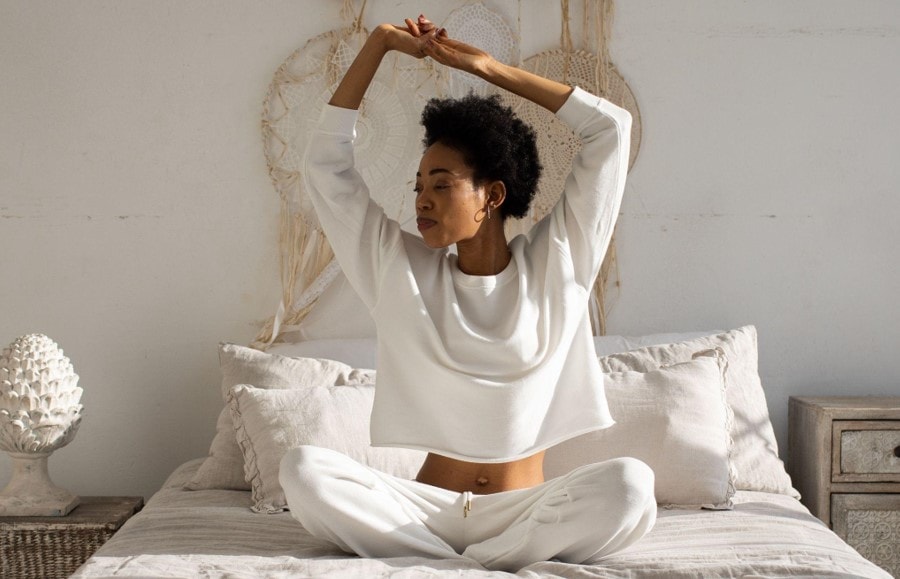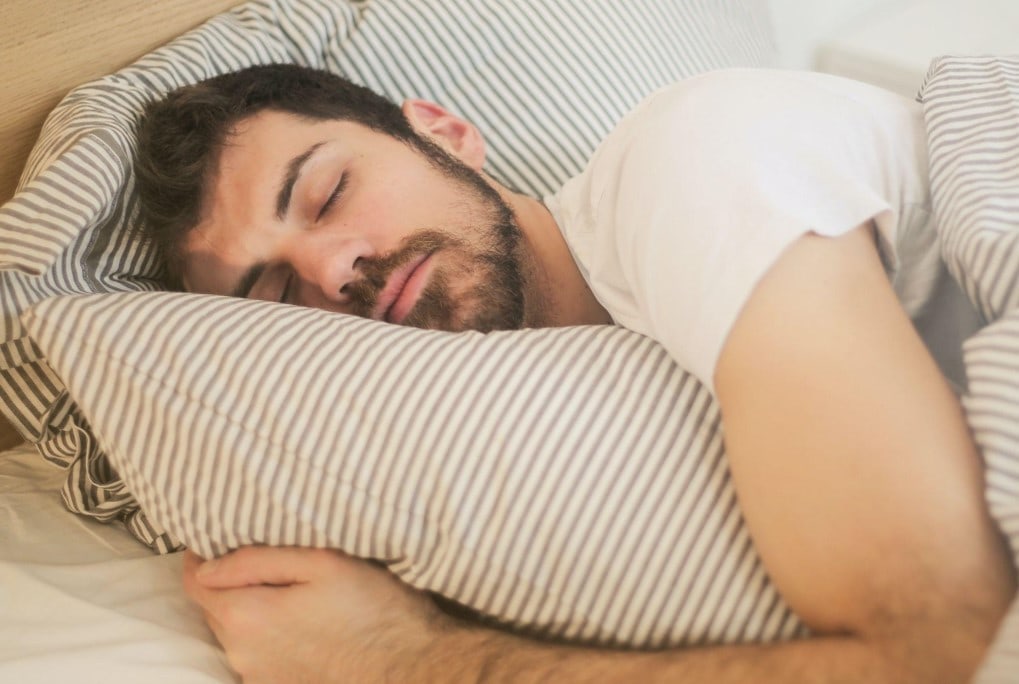Sleep apnea is a common disorder that causes breathing to stop and repeatedly start, interrupting sleep, reducing the quality of rest, and leading to more serious risks due to lowering the oxygen levels in your body. The way you position your body as you sleep can impact your health.
While you may have a favorite sleeping position or change often during the night, choosing one is beneficial for improving your breathing and providing relief from sleep disorders, including certain forms of sleep apnea.
Your favorite sleep position may be comfortable, though if you’re diagnosed with sleep apnea, it’s essential to consider if it supports a good night’s sleep and whether you’ll need a CPAP mask.
It’s also essential to determine which type of this sleep disorder you have so that you can find the best accommodation for your health.
What Are the Symptoms of Sleep Apnea?
The most common symptoms of sleep apnea include loud snoring, fatigue in the morning, frequent sleep disruption, waking up to gasp for air, insomnia, irritability, dry mouth, and headaches.
Generally, you may feel as though you never slept, even if you were asleep for the appropriate amount of time for a good night’s rest. These symptoms may cause difficulty paying attention while awake, causing drowsiness and hypersomnia or daytime sleepiness.
Sleep apnea symptoms can be subtle initially, though, over time, you or someone in your home may recognize more serious issues, such as difficulty breathing and not falling into REM sleep.
There are varying degrees of sleep apnea severity, which can impact how you sleep, and the best sleeping position for relief from this condition.
Different Types of Sleep Apnea
There are several types of this sleeping disorder, which include the following:
- Central sleep apnea, or CSA, is a sleep disorder that occurs when your brain doesn’t know when to send the right signals to your airway muscles, which control breathing.
- Obstructive sleep apnea, or OSA, is one of the most common types of this disorder, where the muscles in your throat relax, which causes the airways to constrict, blocking air from flowing into the lungs.
- Complex sleep apnea, or treatment-emergent central sleep apnea, usually happens if you have the obstructive form of this condition, which can become less severe with proper treatment with diagnosis and a sleep study.
A sleep specialist can provide the proper treatment required, based on the type of sleep apnea condition, which can help alleviate your symptoms, prevent heart problems and breathing issues, and improve your sleep quality.

Which Are the Best Sleep Positions for Sleep Apnea?
There are several sleep positions that are ideal for sleep apnea sufferers, which can support your breathing as part of your sleep medicine treatment.
When you find the right position for sleep, investing in the best mattress, pillow, and bedding is essential to avoid neck pain.
Sleeping on Your Side
Side sleeping is a good position for many sleep apnea patients, with your back straight or slightly bent. When you sleep on the left side, this reduces the effects of this sleeping disorder more than on the right.
This body position increases blood flow, so you don’t experience as many interruptions at night. When you sleep on your side, you’ll have better spine alignment and less stomach reflux.
An extra, larger pillow that you can hug close to your body helps keep your position consistent during sleep. It’s also a great option during pregnancy or if you experience congestion and need to clear your airways while you sleep.
If you find that sleeping on your right side is a better option, it’s also a good position, as it can provide similar relief, including improved circulation and easier breathing as you sleep.
Sleeping on Your Stomach
While sleeping on your stomach is not the top choice for people with sleep health issues, especially sleep apnea, it can provide the benefit of keeping your airways open so that the tissues in your mouth and throat are pulled forward.
This process reduces the cause of obstruction, though depending on how your support your head, it’s essential to make sure that your pillow doesn’t block your mouth or nose, which can interfere with breathing.
If this position is preferred, you may find that sleeping with a thin pillow or a similar pillow designed for stomach sleepers will ease any discomfort or strain, especially if you sleep most of the night face-down.
It’s also common for some individuals to switch between side sleeping and rest on the stomach, both of which provide advantages for easing sleep apnea symptoms.

Sleeping Positions to Avoid: Sleeping on Your Back
Sleeping on your back is not recommended for moderate or severe sleep apnea sufferers. This position can increase the chances of irregular and interrupted breathing by pulling the soft tissues in your throat downward, which can block your airways.
If this sleeping position is habitual, you find it helpful to purchase a new pillow that can support your body on your side, or you can set a set of pillows or a large body pillow on the opposite side so that you’re prompted to sleep in a new position.
Summary
Before you decide which sleeping position is best for you, it’s important to consult with a specialist with a local sleep foundation or clinic, which may include sleep studies for a diagnosis.
The type of body position also depends on whether you require breathing devices, such as CPAP therapy, which involves a machine and a mask. Further treatments may include surgery to reduce the effects of sleep apnea and lifestyle changes.
Early diagnosis and care for sleep apnea, including adapting to the most beneficial sleeping positions, are vital for reducing the serious effects of this condition while helping you enjoy quality sleep. Proper treatment and good sleep will improve concentration, memory, and well-being during the day.

